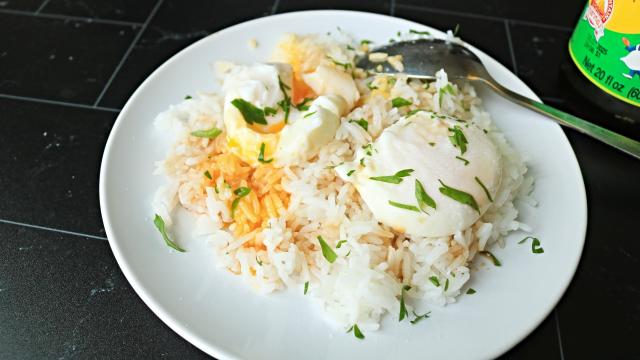The internet says you can and can’t freeze whole raw eggs, so naturally I went and tossed a couple eggs in the freezer. Senior food editor Claire Lower was able to make baby fried eggs with frozen eggs; surely there are other secrets the frozen ovum hides. (Besides the miracle of life.) It turns out there is at least one, and it just might change the way you poach eggs here on out.
The average poaching method is simple on paper. Simmer water and gently drop an egg into it. Cook it for four or five minutes. When you fish it out, the egg white will be set and the yolk will be runny. But in reality, the egg white flies off, the yolk breaks, the yolk overcooks, or the egg sinks to the bottom and cooks flat. Oh, and that 3-D balloon shape? Well, it’s just impossible to get.
How to poach a frozen egg
Freezing the entire egg first addresses most of these problems. First pop a couple raw eggs in the freezer for about an hour. The USDA doesn’t suggest freezing raw eggs in their shell, but they’re fine for consumption as long as they don’t crack. (This is why I suggest freezing the egg for only an hour or so, but some folks will do it for longer with no cracking trouble.)
About five minutes before the hour is up, fill a medium-sized pot halfway with water and bring it to a simmer. Take the egg out of the freezer, run it under cool water for about 20 seconds and peel the egg quickly over a bowl. The white and yolk will be mostly frozen, but possibly a little slushy on the edges. If any egg white runs off into the bowl, leave it. That thinner albumen is usually what floats away anyway.
Place the frozen egg in a spoon or small bowl, and lower it into the simmering water. If you’ve ever had a problem accidentally breaking yolks on the way in, worry no more. That frozen yolk grants you a little grace. Poach as usual, checking after five minutes for your desired doneness. You’ll likely need to leave it in the water for a minute or two longer, because the egg is starting from a cooler temperature than usual. Gently lift the egg out of the water with a slotted spoon and witness the magic.
Starting from frozen is great for a runny yolk
The egg will keep its round shape instead of oozing out into a pancake on the bottom of the pan. Not to the extent that it looks like a hardboiled egg, but discernibly rounder. The outside egg white is locked in its shell shape when it starts cooking, and keeps its rotund figure in the finished egg. I also noticed that starting from freezing buys you time if you have tend to overcook the yolk. I allowed my eggs to cook for a few extra minutes until the white was set firm, and when I cut into the egg the yolk was perfectly runny.
There are a lot of odd suggestions for poaching the perfect pudgy egg, and if none of them have worked yet, you should definitely try this one out. All you need to do is think ahead about an hour, and ignore your family when they ask what you’re doing. Serve your poached eggs as eggs benedict, on a bed of rice with soy sauce, or nestled upon a green salad.

Leave a Reply
You must be logged in to post a comment.